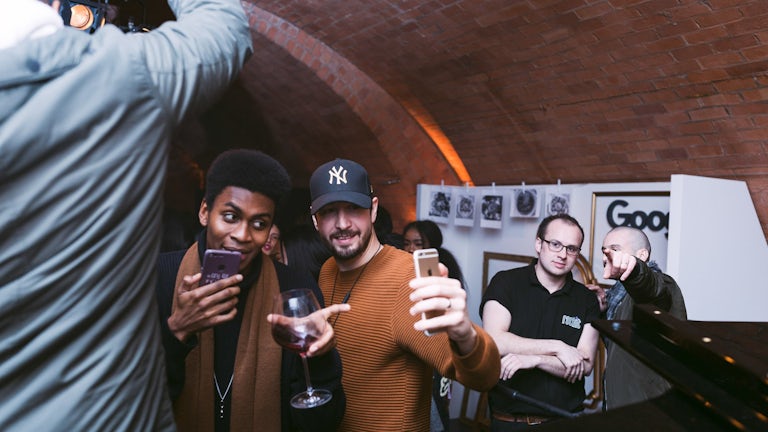Shopping Bag (0)
Your shopping bag is empty


Our recent Young Blood research confirmed that audiences, particularly younger ones who feel the most politically disenfranchised, are instead choosing to align with brands that not only share their values but also live them.In the age of transparency, if you want to build respect with your audience you’ve got to be seen to have an authentic, genuine and consistent message. Converse focus on ‘unleashing the creative spirit’, Sonos are on a mission to help people ‘#ListenBetter’ and Patagonia are simply about ‘being a responsible company’.
In a world that’s brimming with high quality products, this shared sense of purpose is what makes that brand stand out. Today’s consumers expect ‘their’ brands to understand what’s happening in their lives, to create value for them, champion their cultural interests and, at best, are willing to open-up and hand their brand over to their fans to experience and co-create. Brands need to be more authentic, more creative and more culturally relevant than ever before. Jumping on a trend is unforgivable, but giving back and supporting results is the quickest route to acceptance.
‘Influencer’ is obviously the buzzword of the moment. The reality of marketing has always been about chasing and achieving influence. For example, our work for Google and YouTube focuses on identifying those who hold the most influence. In turn, these megabrands then ask these influencers to create or co-create experiences and content for them to share.
Perhaps the best thing about influencers is the chance for anyone to be one. We’re talking developers, brands, content creators, internal advocates, retailers, or, the original influencer: the cool kids.
It’s also impossible to ignore the change in how we regard celebrities. Instead of being regarded as role models, we’re now viewing them as a source of entertainment. For many, a celebrity endorsement alone won’t cut it. Instead there’s a move towards more attainable and credible figures that they respect and admire - influencers.
The tables have turned. Brands used to influence youth. Now we’re seeing a new generation of self- motivated and resourceful kids who are just as likely to be influencing brands from the bottom up. Take the unique culture of council estates, which now influence the catwalks, rather than the other way round.
With Instagram, a great idea or vision can be seen around the world in a day – and it’s younger audiences who drive this. Nike’s recent campaign is not only fronted by FKA twigs, someone who has used talent and the tools at her disposal to carve her own path, but has been shot by David Uzochukwu, a 17-year old photographer, who twigs personally chose.
There’s no doubt experience cuts through, for both starting conversations and building deeper relationships. Giving time and physical participation is the peak of commitment to a brand. As sectors beyond youth focus on culturally led strategies, events are increasingly becoming a key focus.
However, historically experiential has been fairly challenged due to perceived high costs. As an industry, we need to achieve and demonstrate better ROI, both in terms or quantity (reach) and quality (behaviour change). Fortunately, KPIs can be better tracked than ever before with a myriad of tools that get smarter every day.
There’s opportunity for increased focus and better integration within the campaign mix and better planning of narrative, communications, content and amplification, using technology to increase shareability. There’s also an increasing trend for multi-faceted events for multiple audiences, with tailored experiences and sessions for each – whether media, bloggers, influencers, stakeholders, trade, internal, competition winners and beyond.
The tables have turned. Brands used to influence youth. Now we’re seeing a new generation of self- motivated and resourceful kids who are just as likely to be influencing brands from the bottom up. Take the unique culture of council estates, which now influence the catwalks, rather than the other way round.
With Instagram, a great idea or vision can be seen around the world in a day – and it’s younger audiences who drive this. Nike’s recent campaign is not only fronted by FKA twigs, someone who has used talent and the tools at her disposal to carve her own path, but has been shot by David Uzochukwu, a 17-year old photographer, who twigs personally chose.
There’s no doubt experience cuts through, for both starting conversations and building deeper relationships. Giving time and physical participation is the peak of commitment to a brand. As sectors beyond youth focus on culturally led strategies, events are increasingly becoming a key focus.
However, historically experiential has been fairly challenged due to perceived high costs. As an industry, we need to achieve and demonstrate better ROI, both in terms or quantity (reach) and quality (behaviour change). Fortunately, KPIs can be better tracked than ever before with a myriad of tools that get smarter every day.
There’s opportunity for increased focus and better integration within the campaign mix and better planning of narrative, communications, content and amplification, using technology to increase shareability. There’s also an increasing trend for multi-faceted events for multiple audiences, with tailored experiences and sessions for each – whether media, bloggers, influencers, stakeholders, trade, internal, competition winners and beyond.